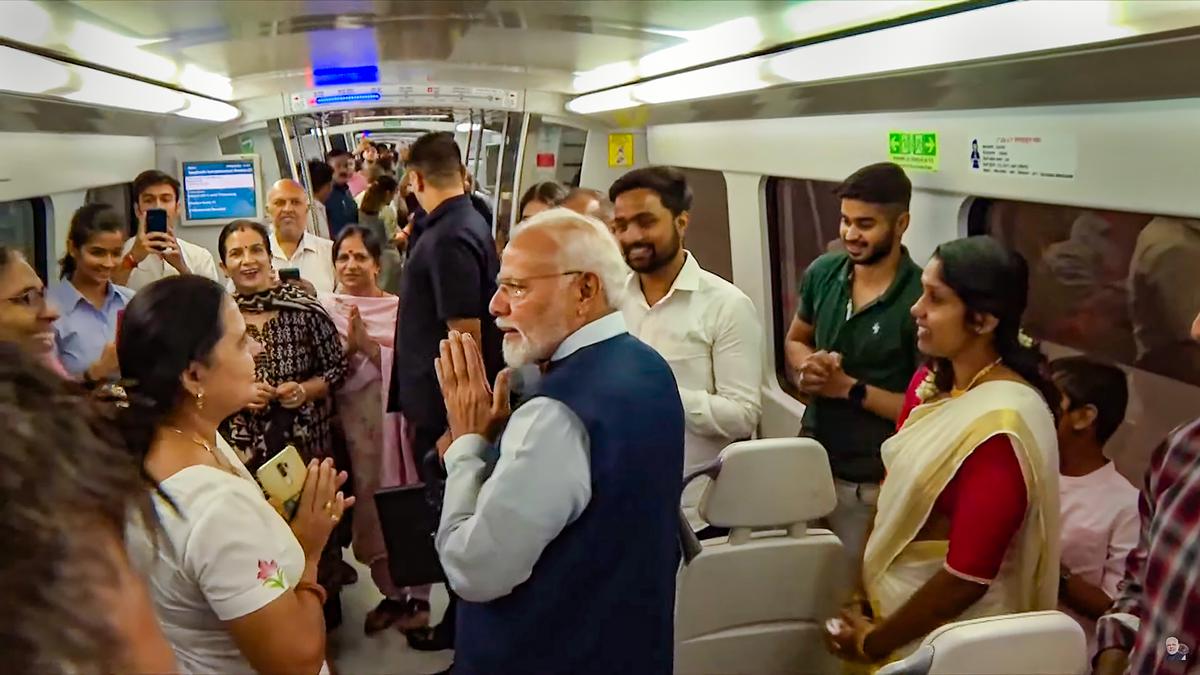
PM Modi inaugurates extension of Delhi Metro’s Airport Line, takes metro ride
The Hindu
PM Modi inaugurated the extension of Delhi Metro's Airport Line, extending it to YashoBhoomi Dwarka Sector 25 station. He took a metro ride from Dhaula Kuan station and interacted with passengers. The new station will enhance urban connectivity and provide metro access to nearby areas. The Airport Express Line now has seven stations, with the total length of the Delhi Metro network increasing to 393 km.
Prime Minister Narendra Modi on September 17 inaugurated the extension of the Delhi Metro's Airport Line which now terminates at YashoBhoomi Dwarka Sector 25 station.
He unveiled a plaque at the new station marking the nearly two-km extension extension of the Airport Line. The Prime Minister also interacted with some metro workers at the station, sources said.
Before the inauguration, Mr. Modi took a metro ride from the Dhaula Kuan station to the newly-built YashoBhoomi Dwarka Sector 25 metro station. During the ride, many passengers interacted with the Prime Minister and snapped selfies with him.
The high-speed corridor has been extended from Dwarka Sector 21 to the YashoBhoomi Dwarka Sector 25 station which has been built underground using the conventional cut-and-cover technology.
The opening of the new metro station at Dwarka Sector 25 will enhance urban connectivity in the sub-city and facilitate people in reaching the India International Convention and Expo Centre (IICC), named YashoBhoomi.
PM Modi later inaugurated the Phase-1 of 'Yashobhoomi', a state-of-the-art convention and expo centre, in Dwarka.
"Passenger operations on this extended section will start from 3 p.m. today. With the addition of this section, the total length of the Airport Express Line from New Delhi to Yashobhoomi Dwarka Sector-25 is 24.9 km," a senior official said.













